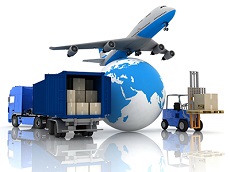
When you receive that distinctive knock at the front door, your eyes light up with anticipation; you have been waiting for delivery of your order for a week, and you can’t wait to hold the package in your hands, open it up and start using what you ordered.
But have you ever thought about how your parcel actually got to you? It’s slightly less interesting if you’ve ordered from a domestic supplier. However, the story is a little more complicated if you’ve chosen international delivery.
Many Hands Make Light Work
There are hundreds of people involved in your parcel’s journey, and it all starts off with the person who packs your goods; they have the most important job of all! If your parcel contains the incorrect item, is poorly packaged or has the wrong address label, every other part of the process is made redundant; you will either not receive the item at all, not receive the item you ordered or receive a damaged item. However, let’s assume that the packer does a good job. A courier will collect your parcel and transport it in his van to a sorting office. It will be handled by dozens of people here, as the correct method of dispatch is chosen. International packages will be grouped together, and transported to an airport, where Air Cargo Charter Solutions, such as those offered by Chapman Freeborn International Limited will be used. The process of sorting is repeated here, and your parcel will then be on the plane, ready for its destination country.
When it arrives in your country, the sorting process is repeated, and it will be transported onto the van to reach the regional hub. From here, local delivery will be organised, and it won’t be long before that knock at the door comes!
When you consider the process of international delivery, it is a great feat of human communication, planning and ingenuity to get your parcel to your doorstep. Take one piece out of the jigsaw and your parcel will not reach you – it may be lost, damaged or even stolen.
What’s the Difference Between Air Freight and Ground Freight Shipping?
Well, to start with, land freight is miles less efficient – literally. Not only is land freight much slower than air freight, it also involves higher risks and greater pollution per mile relative to distance covered.
However, all international deliveries require the right balance between air and land freight. Couriers look for the perfect balance to minimise costs and maximise efficiency. If this is done successfully, your parcel will be delivered with the lowest carbon footprint possible (given the vehicles used). And in a world where the environment covers front pages around the world, we need the most efficient, low-carbon logistics solutions we can get.
Have you ever thought about the story behind your delivery? Perhaps you’ve got an interesting story to tell about an order you received?!






